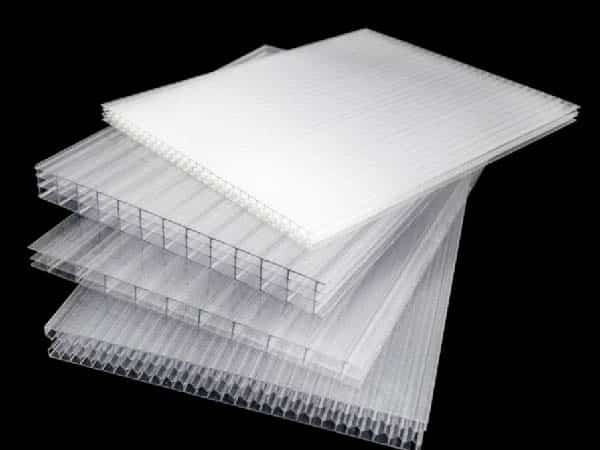If you’re thinking about starting a commercial greenhouse to earn money by growing vegetables, flowers, or other crops, it’s crucial to focus on producing more efficiently and making a good profit. Employing advanced technologies can boost how much you grow and how good your crops are.
Don’t Miss: Greenhouse Farming vs. Traditional Farming
However, remember that there are various commercial greenhouses, each with unique features and advantages. Before diving into your greenhouse project, learning about these different types is important so that you can pick the one that fits your budget and meets your goals best.
Types of Commercial Greenhouses You Can Choose from
Commercial greenhouses vary widely because they are made with different technologies, require different amounts of money to set up, and serve different purposes. They are often grouped based on what they are made of, their design, their function, and how technologically advanced they are.
Next, we’ll look at greenhouses from four angles: their use, design, the materials they’re covered with, and their technological features. We’ll explore more than 20 different types of greenhouses to help you understand what makes each one special. This will make it easier for you to decide which greenhouse is right for your goals and budget.
1. Classification by Primary Use
Commercial greenhouses are mainly used for growing agricultural products like vegetables, flowers, fish (in aquaculture), and even livestock. Some greenhouses are also set up for exhibitions and other special events. Here’s how we can categorize them based on their primary use:
1)Nursery Greenhouse
Nursery greenhouses are all about starting plant life. They are specifically designed to help seeds sprout, and young plants grow. These greenhouses create the perfect conditions for seeds to germinate and for young seedlings to thrive during their critical early stages.
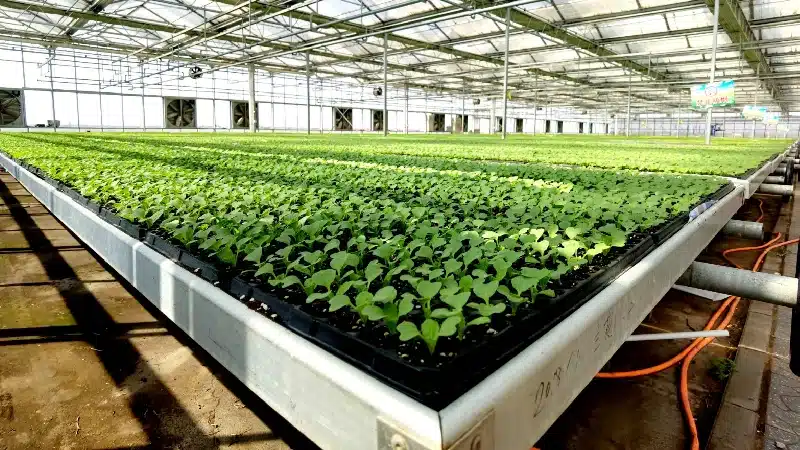
2)Vegetable Greenhouse
Vegetable greenhouses focus on cultivating vegetables in a controlled environment. This setup helps increase the vegetable yield, extend the growing season, and even grow vegetables during off-season periods. These greenhouses protect against harsh weather like frost, heavy rain, or extreme heat and help manage pests and diseases. The goal is to consistently produce high-quality vegetables all year round to satisfy market demands.
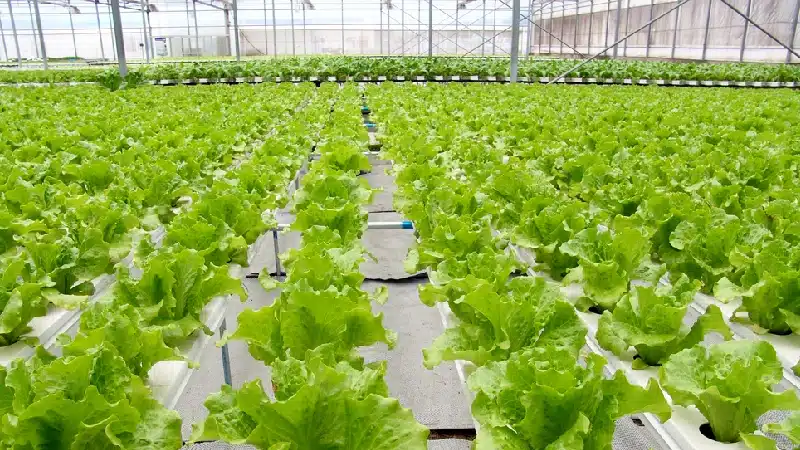
3)Floriculture Greenhouse
Floriculture Greenhouses are dedicated to the cultivation and care of flowering plants. These structures provide a protected environment that shields plants from harsh weather and ensures optimal growth conditions. By controlling temperature, humidity, lighting, and ventilation, floral greenhouses support healthy flower development, prolong the blooming period, or even trigger earlier blooming.
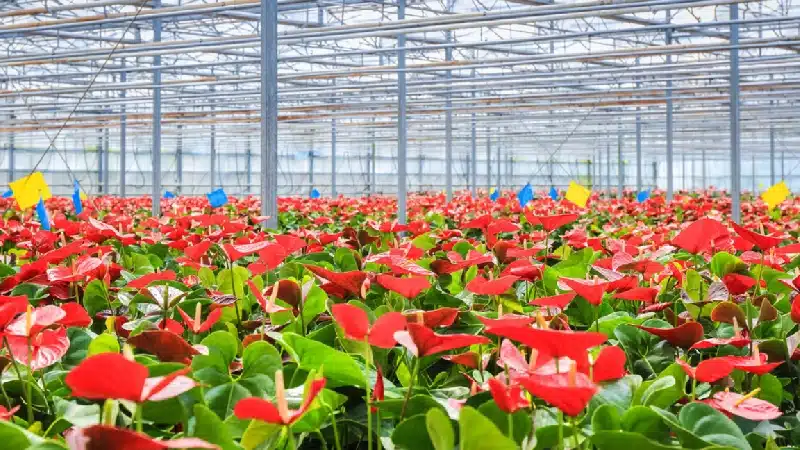
4)Fruit Tree Greenhouse
Fruit tree greenhouses are designed to cultivate fruit trees under artificially controlled environmental conditions. These greenhouses adjust temperature, humidity, and lighting to create the perfect setting for fruit trees to flourish. They enable faster growth, prolong the fruit-bearing season, or allow for off-season fruit production. This capability is particularly valuable for producing fruit all year round or in regions with climates that typically do not support certain fruit trees.
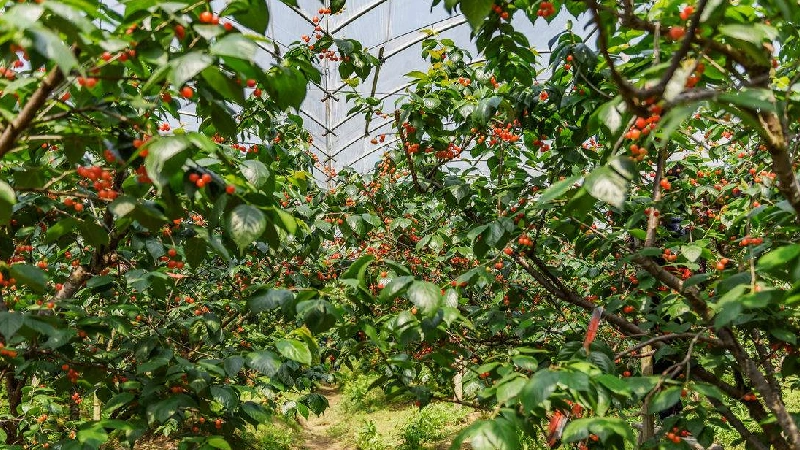
5)Aquaculture Greenhouse
Aquaculture greenhouses represent a novel approach by merging greenhouse technology with fish farming. These greenhouses use their structures to control the environment, optimizing conditions for the growth of aquatic species such as fish, crustaceans, and shellfish. This innovative model blends traditional plant greenhouse techniques with modern aquaculture practices, aiming to boost production efficiency and minimize environmental impacts while ensuring high yields.
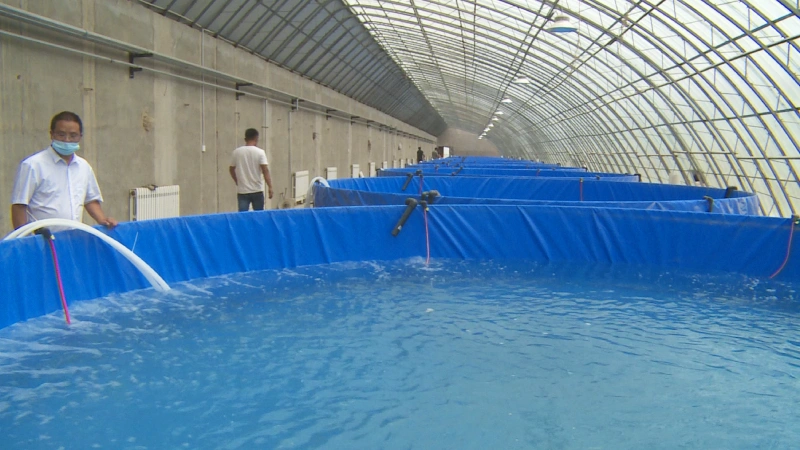
6)Livestock Greenhouse
Livestock overwintering greenhouses are built specifically to shelter livestock during the harsh winter months. These greenhouses offer a warm and stable environment that helps protect animals from the cold, minimizing the impact on their health and productivity. This approach has become particularly popular in China.
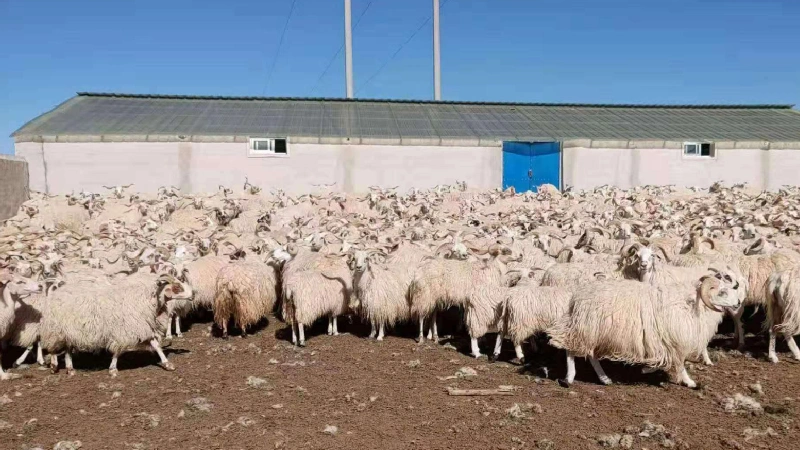
For instance, in Rixie Village, warm sheds for livestock have been constructed using funds allocated for poverty alleviation from Shanghai. These facilities are crucial in ensuring the welfare of the animals throughout the winter, helping them stay healthy and productive even in colder temperatures.
2. Classification by Structural Features
Commercial greenhouses vary in design and structure, influencing how plants are housed and how well the environment inside can be controlled, such as ventilation. Each type of structure offers its own set of benefits and drawbacks. Structurally, greenhouses are divided into single-span, multi-span, and special-structure greenhouses.
1)Single-Span Greenhouse
A single-span greenhouse or freestanding greenhouse is built individually and doesn’t require drainage gutters. Its design allows snow to slide off the roof naturally, preventing excessive weight and potential damage. These greenhouses are often equipped with side windows that can be opened to enhance ventilation, making them particularly effective at keeping cool during hot summers.
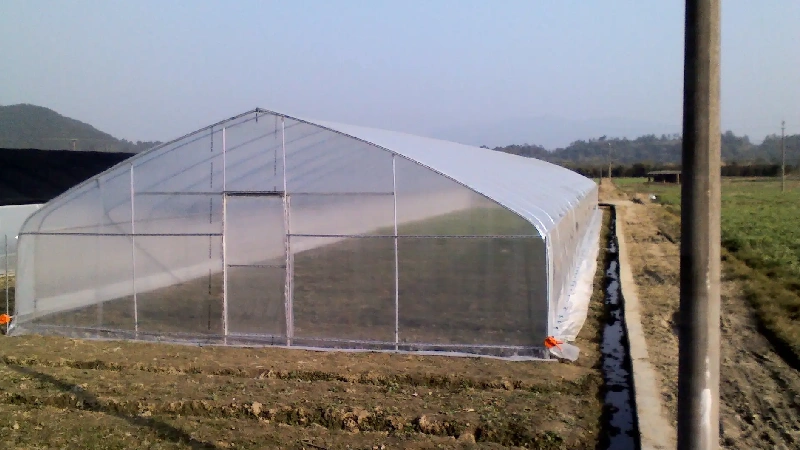
2)Multi-Span Greenhouse
Multi-span greenhouses consist of two or more single-span greenhouses connected at the eaves. The walls between these connected units are removed, and gutters are added, creating a continuous, unified structure. This type allows for larger, more controlled environments ideal for extensive agricultural operations. Several types of multi-span greenhouses are based on the materials used, such as multi-span glass greenhouses, multi-span polycarbonate greenhouses, and multi-span film greenhouses.
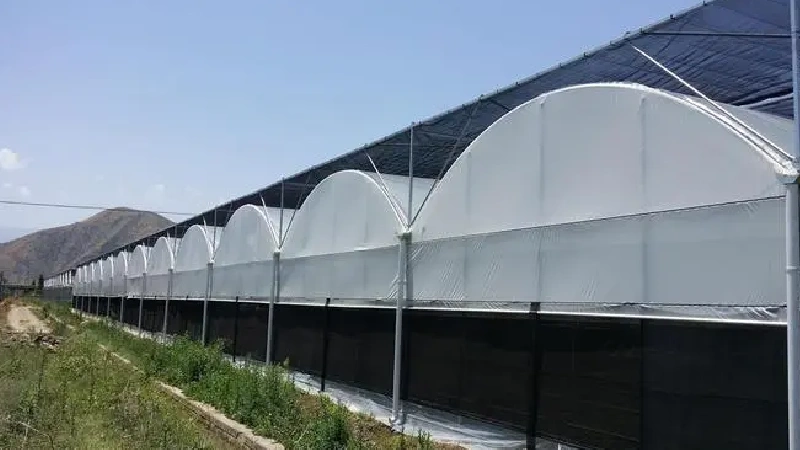
3)Special Structure Greenhouse
Special structure greenhouses are designed with unique features to meet specific agricultural needs or to maximize efficiency in particular climates. Examples include the solar greenhouse, the Yin-Yang greenhouse, and the Venlo-type greenhouse.
Passive Solar Greenhouse
Also known as Chinese-style greenhouses or Chinese cold frames, these structures are built with sidewalls, a rear maintenance wall, a support framework, and typically a film covering. They are predominantly found in northern China, where they leverage solar energy to maintain warmth. The rear wall absorbs sunlight, storing and releasing heat to keep the interior warm enough for crops, usually without the need for additional heating except in extremely cold conditions or for special crops.
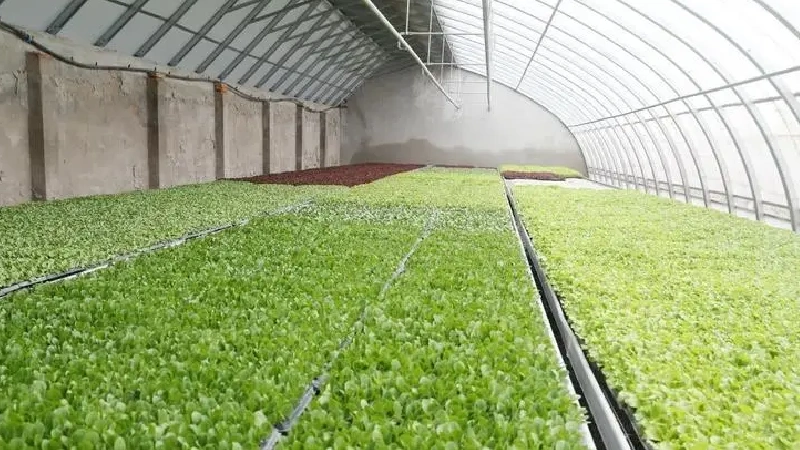
Yin-Yang Greenhouse
The Yin-Yang greenhouse is a modern take on the classic Chinese passive solar greenhouse. This innovative design includes a sloped rear wall that faces north, forming a unique Yin-Yang structure. The ‘Yang’ side of the greenhouse is designed to capture as much sunlight and warmth as possible, maximizing energy efficiency.
Meanwhile, the ‘Yin’ side offers improved insulation, which helps to reduce heat loss significantly. This setup is particularly beneficial for cultivating mushrooms or plants that thrive in the shade, adapting to the specific light needs of each crop.
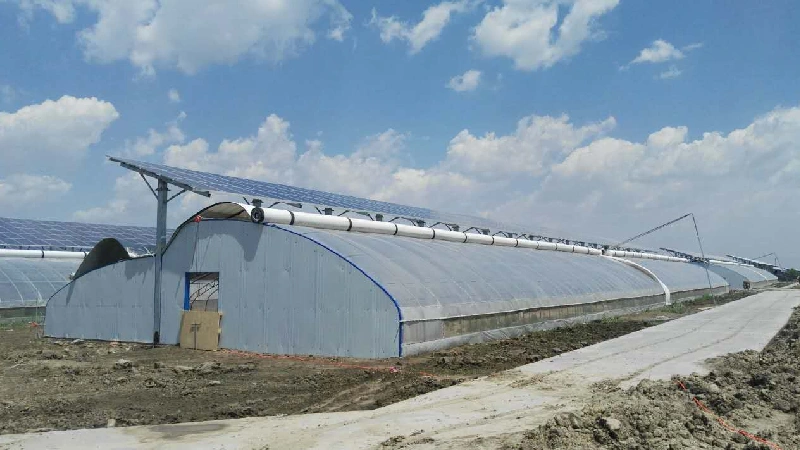
3. Classification by Roof Types
The design of a greenhouse roof significantly impacts its light penetration, ventilation, drainage, and insulation. Different roof shapes not only influence the interior environment but also determine the greenhouse’s suitability for specific climates and crop types. Based on roof design, greenhouses can be classified into the following types.
1) Venlo Greenhouse
The Venlo greenhouse, originating in the Netherlands, is a hallmark of modern high-tech greenhouses. Its roof features a series of triangular ridges, maximizing sunlight exposure while minimizing shading. The ridge vent system efficiently releases excess heat, making it ideal for crops like tomatoes and flowers that thrive in bright light.
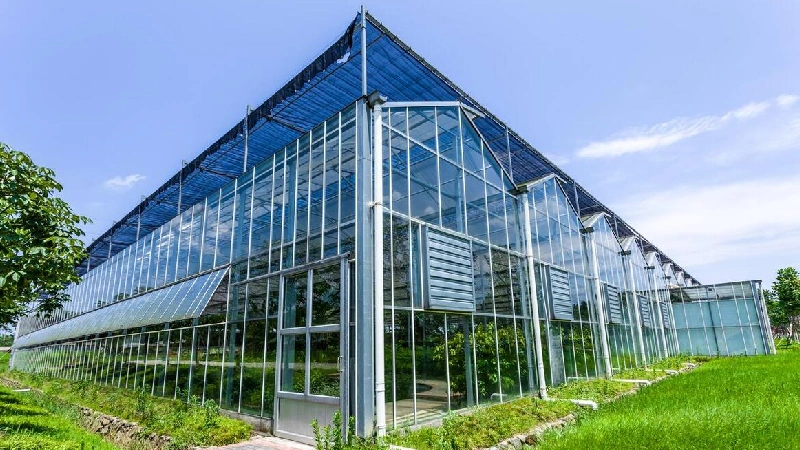
Typically, Venlo greenhouses use materials like glass or polycarbonate panels, which provide excellent light transmission and insulation. These greenhouses are widely used in temperate and cold regions for large-scale commercial cultivation.
2) Dome Greenhouse
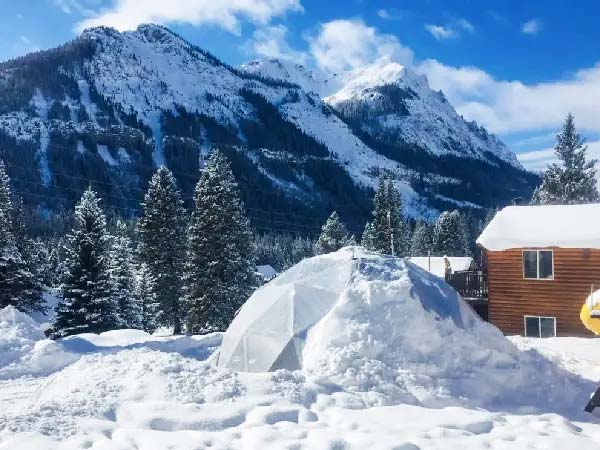
The dome greenhouse is known for its distinctive curved roof, which creates a spherical structure that excels at snow and water drainage. This design also reduces structural stress, which is particularly suitable for areas prone to heavy snowfall or strong winds. Dome-shaped roofs ensure even light distribution throughout the interior, promoting balanced plant growth. Dome greenhouses are commonly used in small-scale farms, backyard gardens, and exhibition spaces, combining functionality with aesthetic appeal.
3) Sawtooth Greenhouse
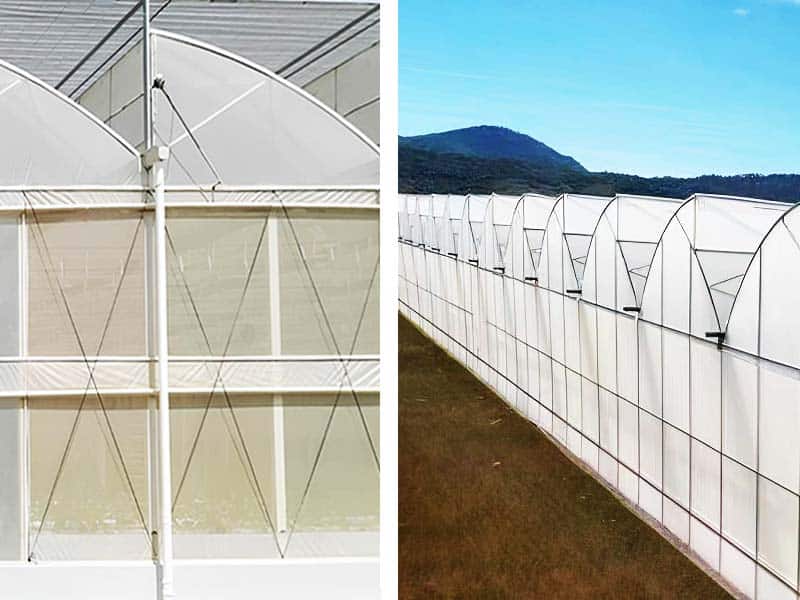
Sawtooth greenhouses, characterized by their wavy roof design, are widely found in tropical and subtropical regions. The sloped roof sections enhance natural ventilation, reducing the reliance on artificial cooling systems and optimizing the internal climate. This design also helps diffuse light evenly across the greenhouse, preventing hotspots.
4) Flat-Roof Greenhouse
Flat-roof greenhouses, with their completely flat-roof design, are less common but serve specific purposes. While their simple structure makes them cost-efficient and easy to construct, poor drainage and water or snow accumulation risk are significant drawbacks. To counter these issues, specialized drainage systems are often employed. Flat-roof greenhouses are typically used in urban settings for rooftop farming or research facilities and for low-height crops requiring limited vertical space.
4. Classification by Covering Materials
The type of material used to cover a greenhouse is essential because it influences cost, light transmission, and overall durability. Greenhouses are commonly classified based on their covering materials, with the main types being plastic film, glass, and polycarbonate (PC) sheets.
1)Poly Greenhouse
Poly greenhouses, or polyhouses, utilize plastic film as the covering. They are available in both single-span and multi-span designs. These greenhouses are more cost-effective and easier to build and maintain than those made with glass or other more rigid materials. The plastic film helps trap heat efficiently while being light and flexible, although it may need to be replaced more frequently than more durable materials.
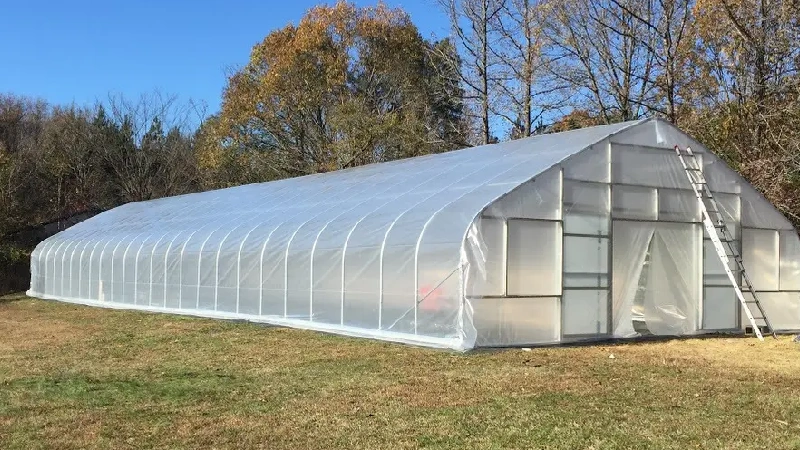
2)Glass Greenhouses
Glass greenhouses use glass as the primary transparent covering material. They are pricier but offer a longer lifespan than poly greenhouses. Glass types can vary from standard clear glass to diffuse glass, which includes options with patterns like pear, fabric, and double velvet. These patterns help diffuse light more evenly throughout the greenhouse, benefiting plant growth by reducing glare and hot spots.
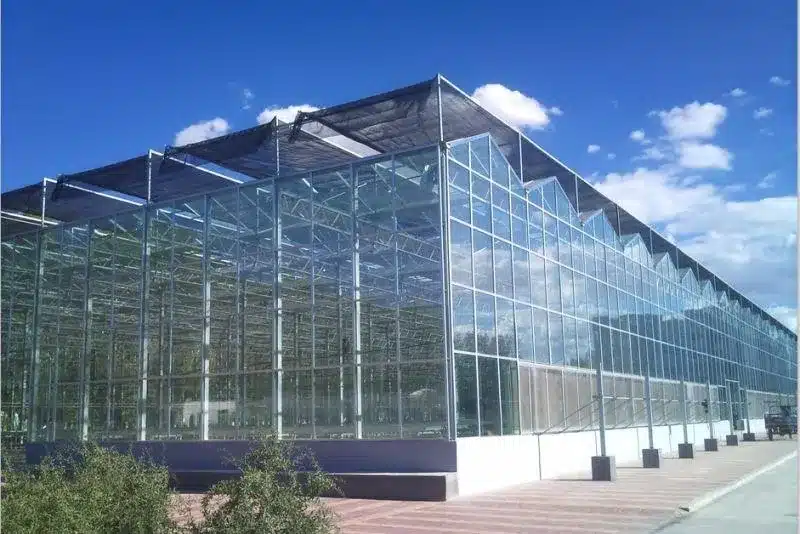
3)Polycarbonate Greenhouse
Polycarbonate greenhouses use double-layer transparent polycarbonate sheets as their main covering material. These sheets are often chosen for their low thermal conductivity, which significantly reduces heat loss and improves energy efficiency. PC sheets are also lightweight and flame-retardant, making them a safer and more durable option. However, it is important to use high-quality PC sheets; lower-quality sheets can degrade over time, showing reduced light transmission and a shorter overall lifespan, often becoming apparent only years after installation.
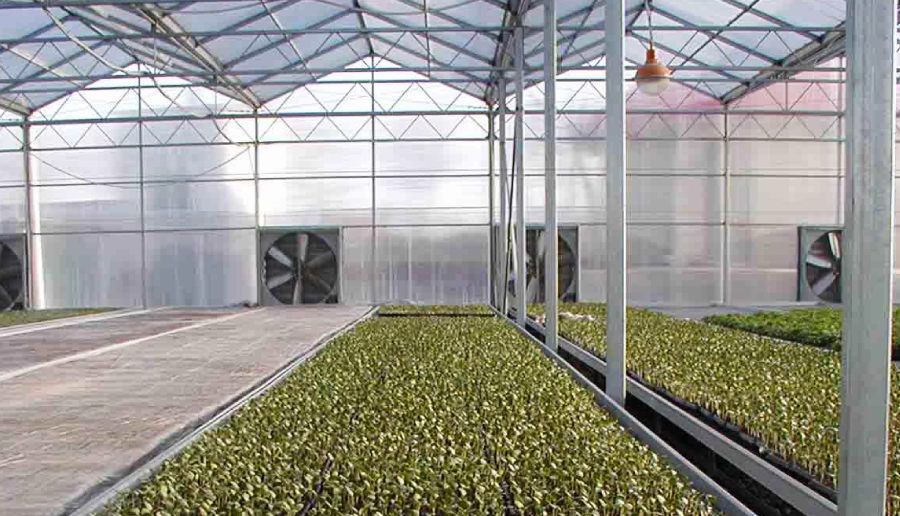
5. High-Tech Greenhouse Classifications
High-tech greenhouses go beyond basic functional and material distinctions, incorporating advanced technologies to enhance productivity and environmental safety. These include light, environmentally safe greenhouses, smart greenhouses, and double-layer inflatable film greenhouses.
1)Light Deprivation Greenhouses
Light-deprivation greenhouses, often called blackout greenhouses, are cutting-edge solutions designed to control plants’ photoperiods. By simulating specific light and dark cycles, these greenhouses enable growers to mimic seasonal changes and optimize growth conditions for light-sensitive crops. Equipped with automated blackout curtain systems, they can completely block natural light to manage the growing environment precisely.
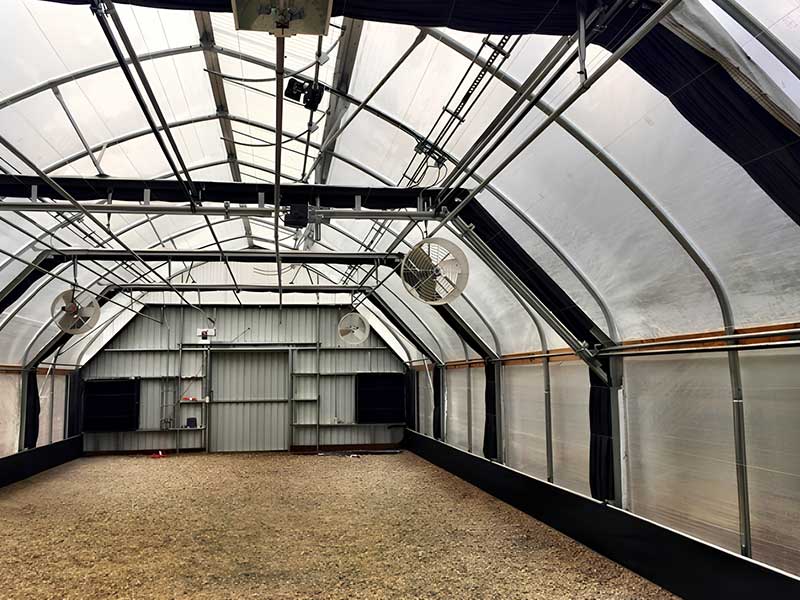
Integrated with advanced control systems, light-deprivation greenhouses support year-round production, enhancing crop quality and increasing yields. These greenhouses are particularly suited for cultivating photoperiod-sensitive plants such as cannabis, chrysanthemums, and other ornamental or medicinal crops.
2)Hydroponic Vertical Greenhouses
Hydroponic vertical greenhouses combine hydroponic systems with vertical farming technologies to maximize production in limited spaces. Using a soil-free method, these greenhouses deliver nutrients directly to plants through a nutrient-rich water solution, eliminating soil-related challenges like pests and diseases. The vertical stacking design allows for high-density planting, making them ideal for urban areas where space is at a premium.
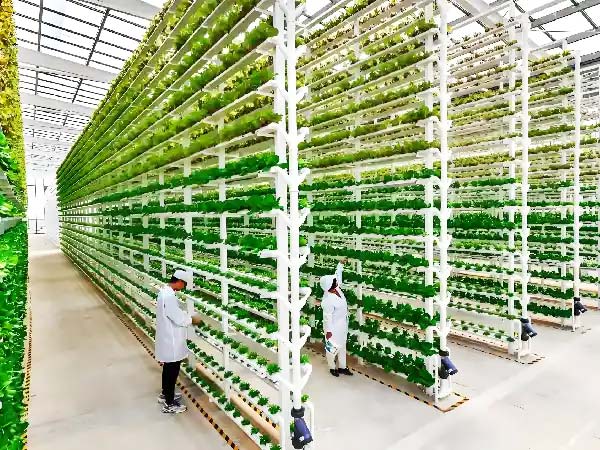
Equipped with smart monitoring systems, they ensure precise control over temperature, humidity, light, and nutrient supply, leading to consistent and efficient crop growth. These greenhouses are particularly beneficial for leafy greens, herbs, and strawberries and are commonly used in urban farming projects, high-demand commercial operations, or regions with limited arable land.
3)Environmentally Safe Greenhouses
These can be subdivided into two main types: physical plant protection greenhouses and environmental control greenhouses.
Physical Plant Protection Greenhouses
This kind of greenhouse uses physical barriers and systems to manage pests and diseases throughout the plant’s lifecycle.
Techniques include soil disease and pest control through soil rotation and barrier electro-treatment methods, aerial disease prevention via electrostatic fog removal systems, and integrated pest management for flying insects using a combination of color, light attraction, and insect nets. Biological control methods are also employed to manage pests like spider mites.
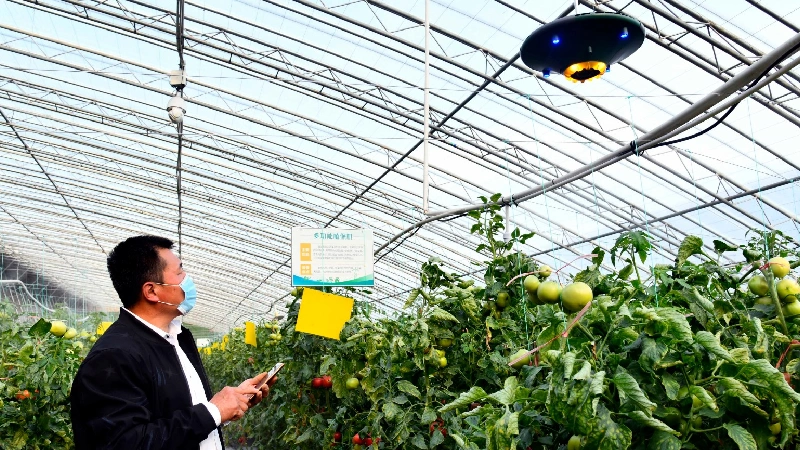
Environmental Control Greenhouses
These greenhouses extend physical plant protection capabilities by regulating temperature, lighting, and carbon dioxide levels to promote pesticide-free growth under various environmental conditions. These greenhouses might feature hot air furnaces, soil heating cables, cooling pads, electrostatic field generators (which also boost photosynthesis in low light), supplemental lighting, and CO2 enrichment systems.
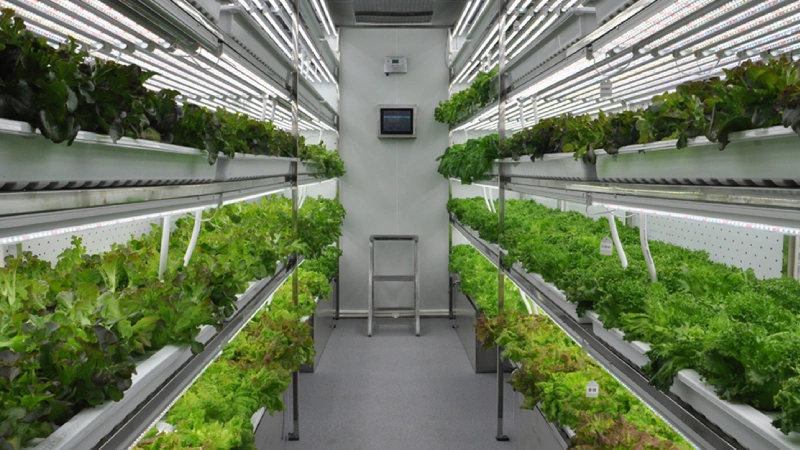
4)Smart Greenhouses
Commonly referred to as modern greenhouses, smart greenhouses are at the forefront of facility agriculture. They incorporate comprehensive environmental control systems that automatically adjust indoor conditions for temperature, light, water, nutrients, and air quality. This sophisticated automation saves significant labor and energy and enhances crop quality and yield.
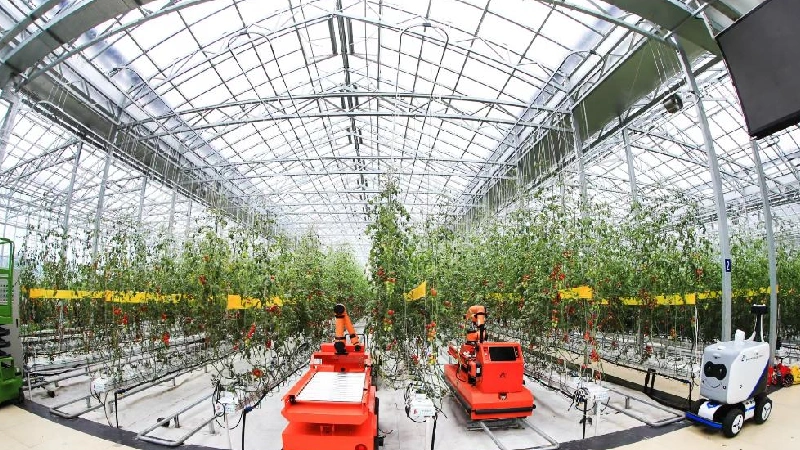
The core of an intelligent greenhouse includes a signal collection system that gathers data, a central computer that processes this information, and a control system that adjusts the environment based on real-time data and pre-set parameters. These systems work together to ensure optimal growth conditions and efficient resource use.
Read More: 10 Advantages of A Commercial Smart Greenhouse
5)Double-Layer Inflatable Film Greenhouses
Double-layer inflatable film greenhouses represent an energy-efficient model that significantly improves on the insulation and energy savings offered by traditional single-layer plastic film greenhouses – often resulting in energy savings of more than 40%. Structurally, these greenhouses mirror the basic design of single-layer plastic greenhouses but differ in how the film is mounted.
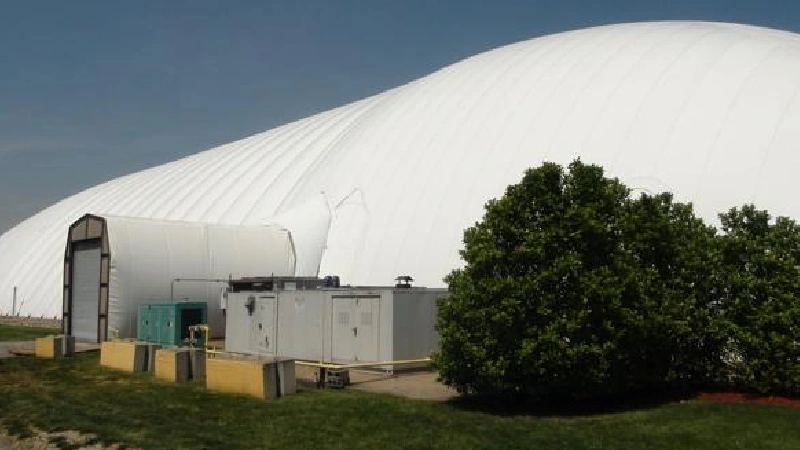
Instead of pressing lines, the plastic film in double-layer greenhouses is secured around the edges, and an air pump or blower is used to inflate the space between the two film layers. This inflation not only supports the structure but also ensures that the inner layer fits snugly against the greenhouse frame while the outer layer is held out by air pressure, creating an effective insulating air gap.
Conclusion
Commercial greenhouses play a key role in modern agriculture, combining human creativity and advanced technology with nature. As science and technology progress and people’s needs change, the variety of commercial greenhouses keeps increasing. We’ve looked at greenhouses from five main angles – purpose, structure, roof type, covering material, and tech upgrades – and identified 18 different types, helping you choose the best one for your needs.
Building commercial greenhouses involves many components and systems. If you’re considering starting in greenhouse agriculture, feel free to contact us anytime for more information about the construction process and current prices.

